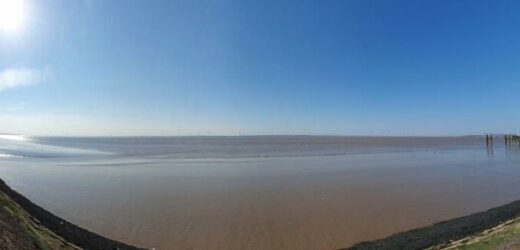Atlantis: Geologist discusses underwater find off Greek coast
We use your sign-up to provide content in ways you’ve consented to and to improve our understanding of you. This may include adverts from us and 3rd parties based on our understanding. You can unsubscribe at any time. More info
Ravenser Odd was a port town that existed during the Medieval period established in around 1235, but got abandoned and then later flooded after a series of heavy storms in the mid-1300s. One storm, known as the Grote Mandrenke, battered northern Europe and wreaked havoc on the town. The port town, which laid on the on the bed of the Humber estuary, has remained under the waters of the North Sea ever since.
The town is one of the largest of a number of spots on the Holderness coast that have been lost over the centuries due to coastal erosion.
But now, researchers from the University of Hull are poised for a major breakthrough after using high-resolution sonar systems to help uncover the town.
The researchers are set to conduct a survey in the coming weeks that should help to reveal the town’s whereabouts.
It comes after an initial search of an area off Spurn Point did not yield successful results.
Mr Parsons told The Guardian: “We think we were a little bit too far to the east.


“Given the stories we’ve had from the folks on the lobster vessels, I’m pretty confident we will find something.”
Mr Parsons is also hoping that the progress his team makes can help to raise money for a proper excavation of the site.
He told The Guardian: “Understanding the past helps us prepare better in the future.
“Ravenser Odd is an incredibly evocative story of the impacts of coastal change on entire settlements.
“I think it is a fantastic way to start conversations with people on the impacts of climate change long into the future by using these stories from the past.”

By 1299, Ravenser Odd was granted a borough charter.
The area consisted of over 100 houses and had a thriving market.
Also present in the town was a prison, a court, wharves, warehouses and a harbour and seawall.
And 100 merchant ships reportedly passed through it each year.
The town’s name comes from the Old Norse hrafn’s eyr (raven’s tongue).
But by 1340, the town started to decline due to coastal erosion, with the sandbank collapsing.
DON’T MISS
India hamstrings West’s Russia sanctions with deal to buy 5 MILLION [REVEAL]
‘UK should be self-sufficient!’ Saudi Arabia deal blasted ‒ POLL [POLL]
Scientists declare if humanity would survive Russia nuclear war [INSIGHT]


Mr Parsons said: “Those things aren’t easily washed away.
“Having looked at historic sites and places that have been lost in a similar way, such as in the Bay of Naples, what you tend to find is that the foundations of these settlements are still there.”
In 1346, a royal inquisition held in the town documented that two thirds of the town had crumbled into the sea.
A chronicler wrote: “At that time the chapel of Ravenser…. and the majority of the buildings of the whole town of Ravenser, by the inundations of the sea and the Humber increasing more than usual, were almost completely destroyed.”
Source: Read Full Article

